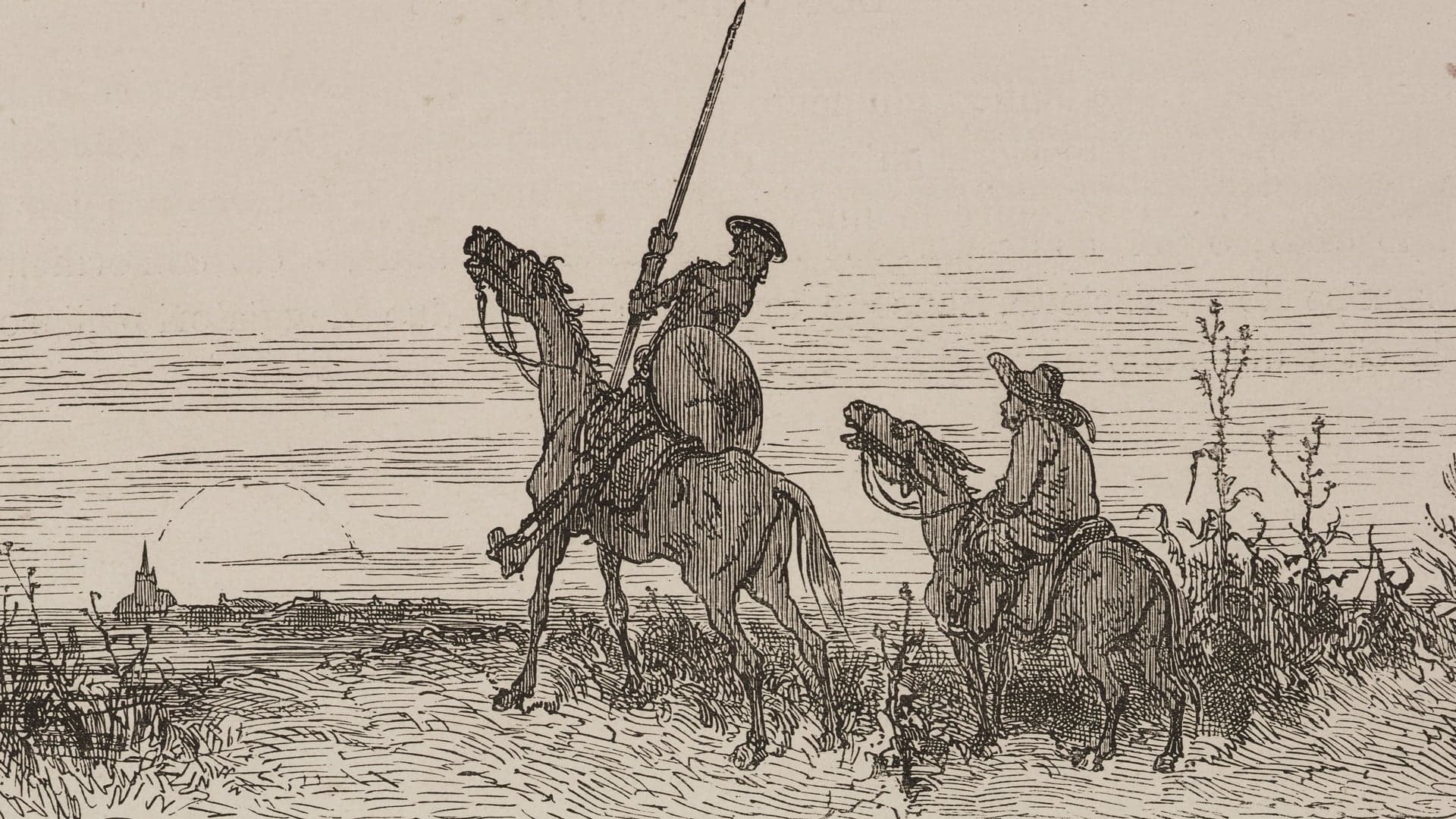On January 16, 1605, Miguel de Cervantes' El ingenioso hidalgo Don Quixote de la Mancha, better known as Don Quixote, is published. The book is considered by many to be the first modern novel and one of the greatest novels of all time.
The protagonist is a minor noble, Alonso Quixano, whose obsessive reading of chivalric romances drives him mad. He adopts the name Don Quixote and, along with his squire Sancho Panza, roams around La Mancha, a central region of Spain, taking on a number of challenges that exist entirely in his mind. Quixote attacks a group of monks, a flock of sheep, and, most famously, some windmills he believes to be giants. The episodic story is intentionally comedic, and its deliberately archaic language contributes to its satirization of older stories of knights and their deeds.
Although Cervantes made only a modest profit off of its publication rights, the novel was re-published across Spain and Portugal within the year. Over the next decade, it was translated and re-published across Europe and widely read in Spain's American colonies. Over the subsequent centuries, critics have continued to praise, analyze, and re-interpret Don Quixote. Many analyses focus on the theme of imagination and the more subversive elements of the text, which has been taken as a satire of orthodoxy, chivalry, patriotism and even the concept of objective reality. The novel gave rise to a number of now-common idioms in Spanish and other languages, including the English phrase "tilting at windmills" and the word "quixotic." Laurence Sterne's Tristram Shandy, another novel frequently called one of the greatest of all time, was heavily influenced by Don Quixote, as was Mark Twain's enormously influential The Adventures of Huckleberry Finn, which explicitly references Cervantes' work. Cerebral, comedic and groundbreaking, Don Quixote has endured in a way that only a select few novels could.
